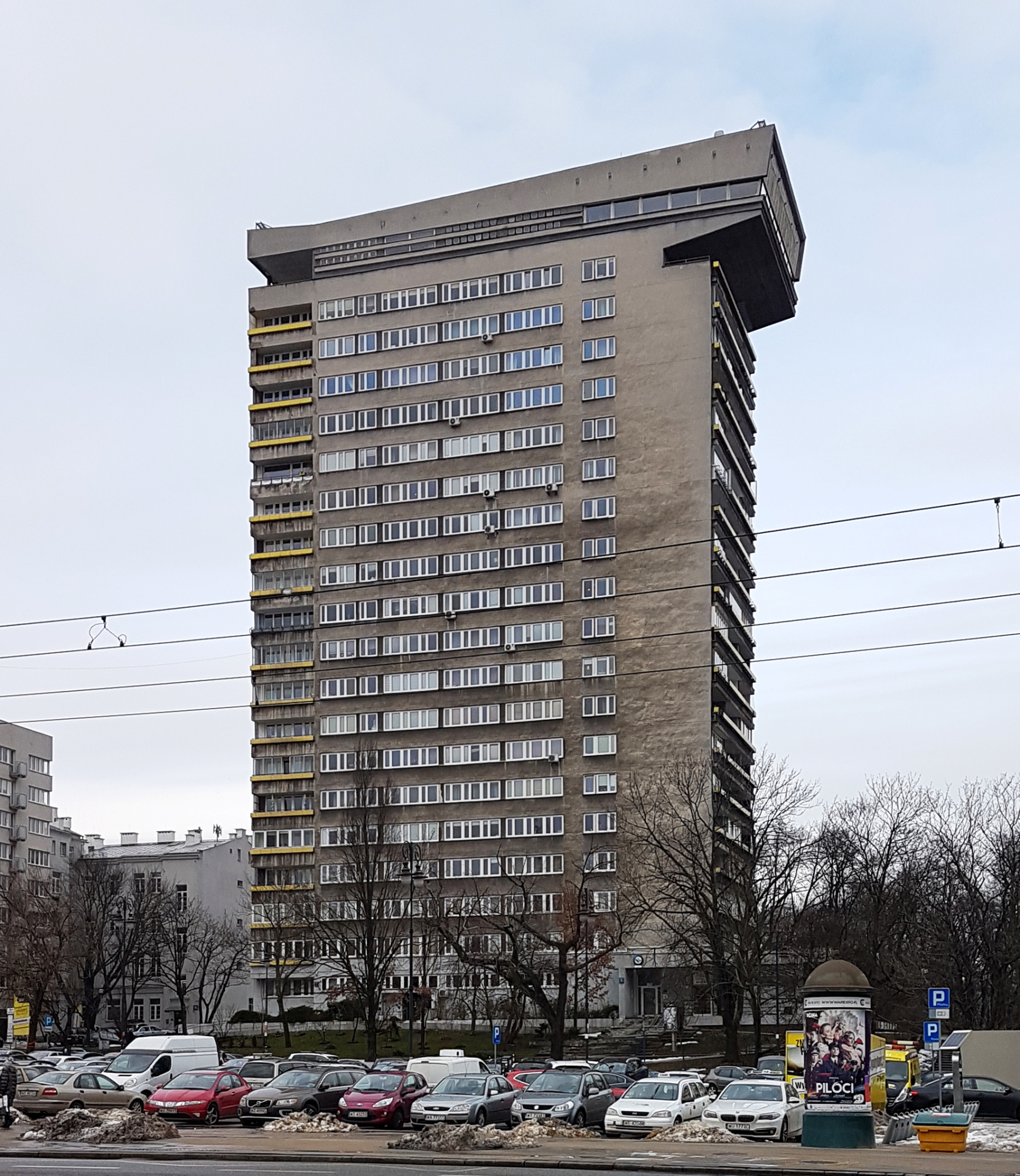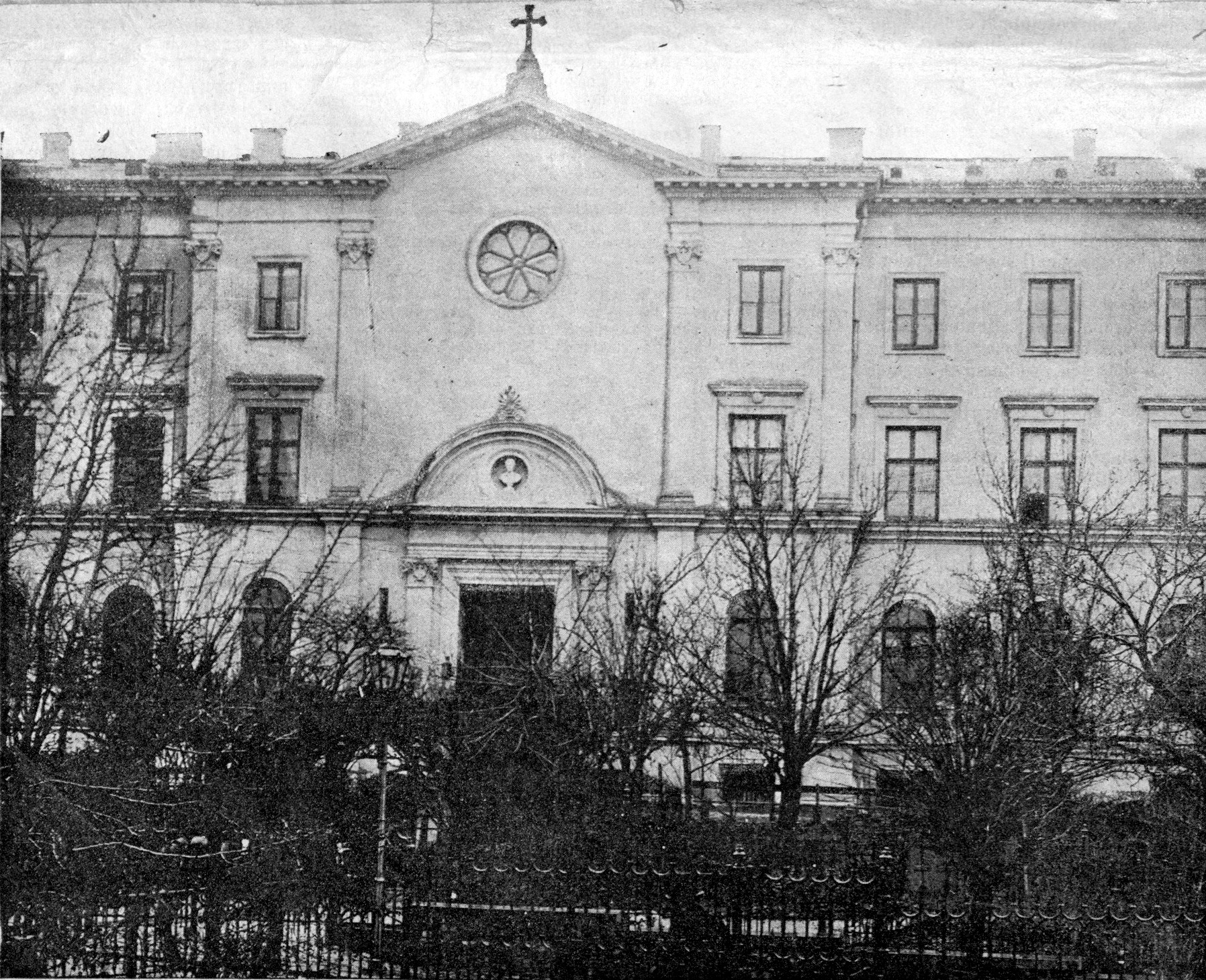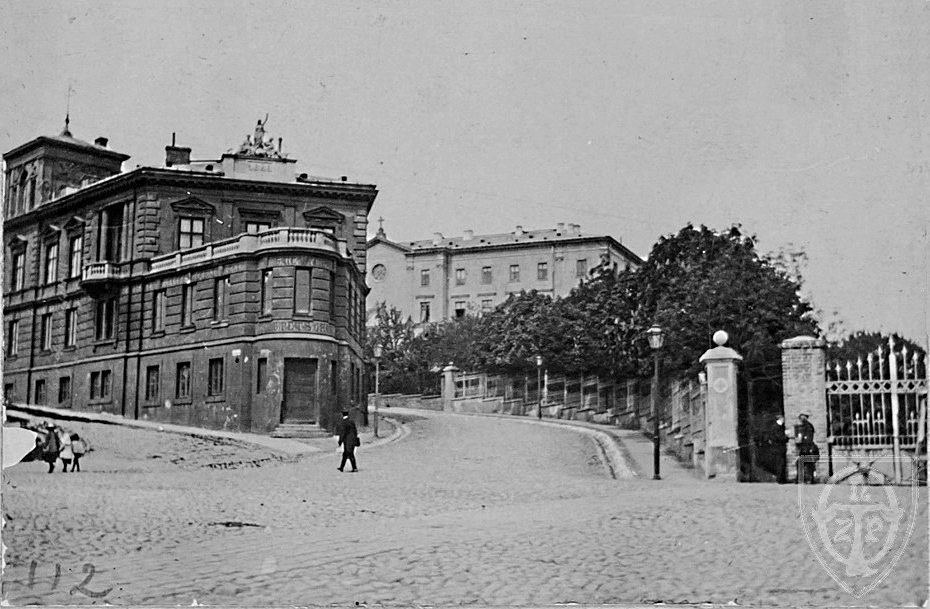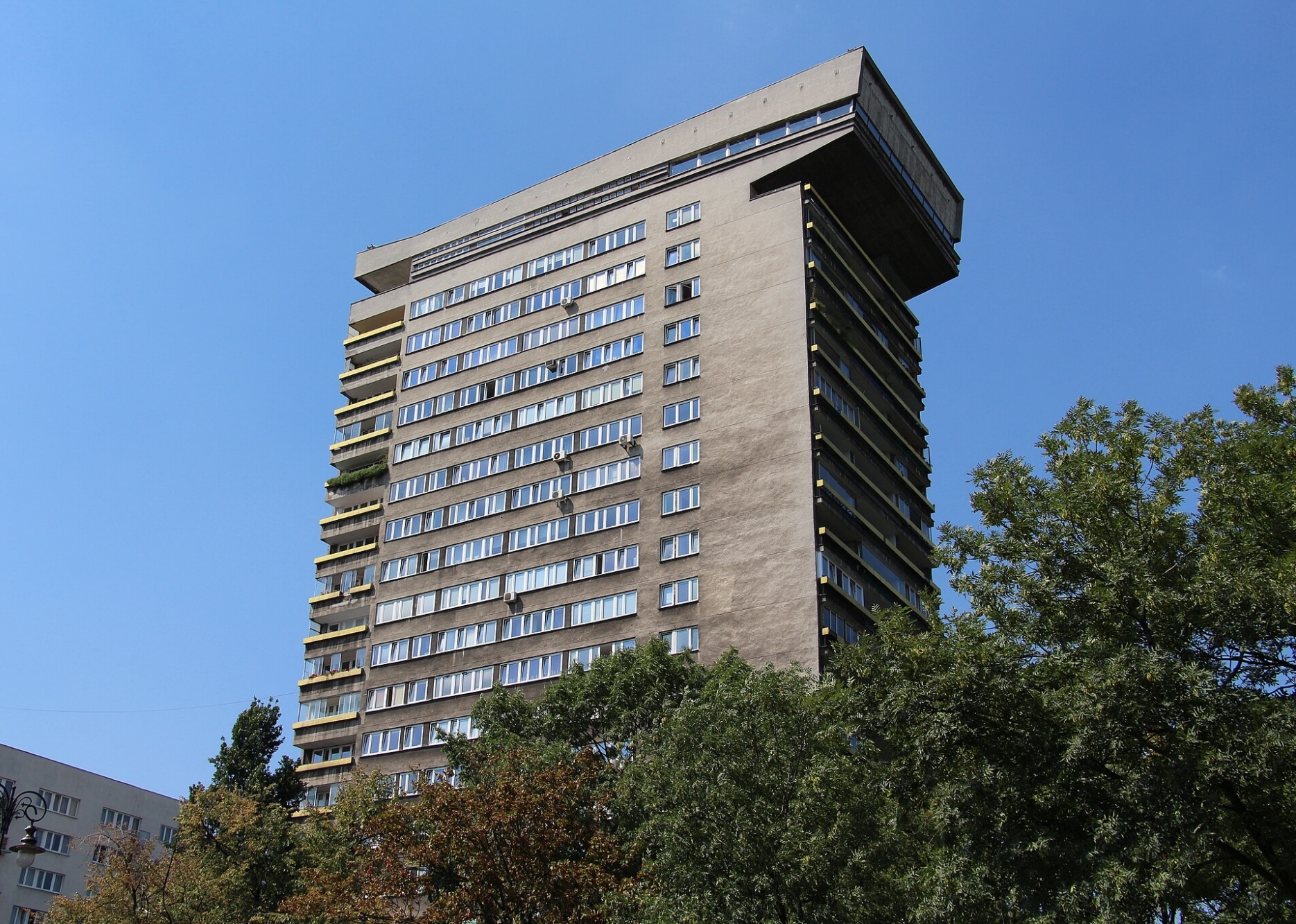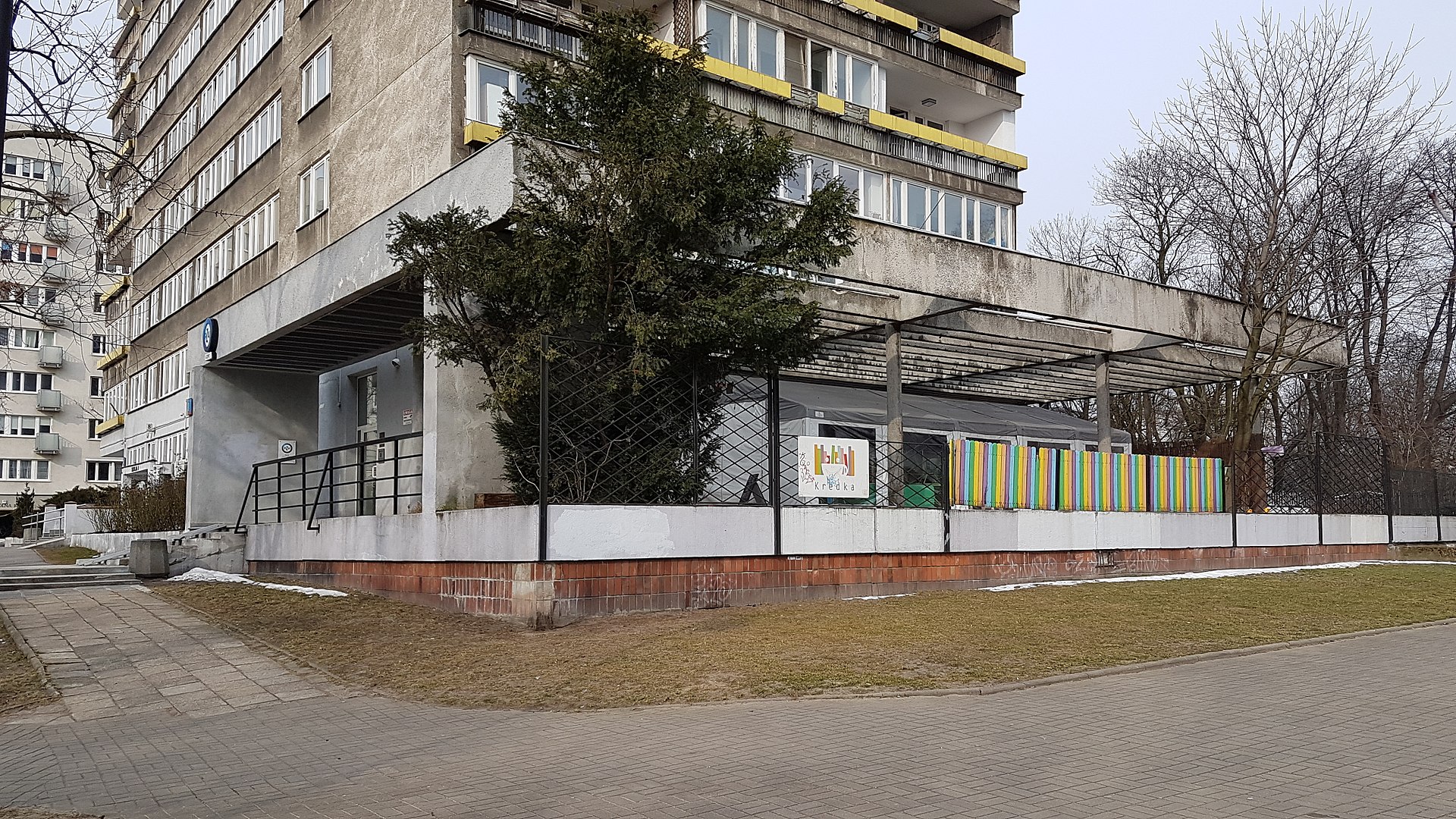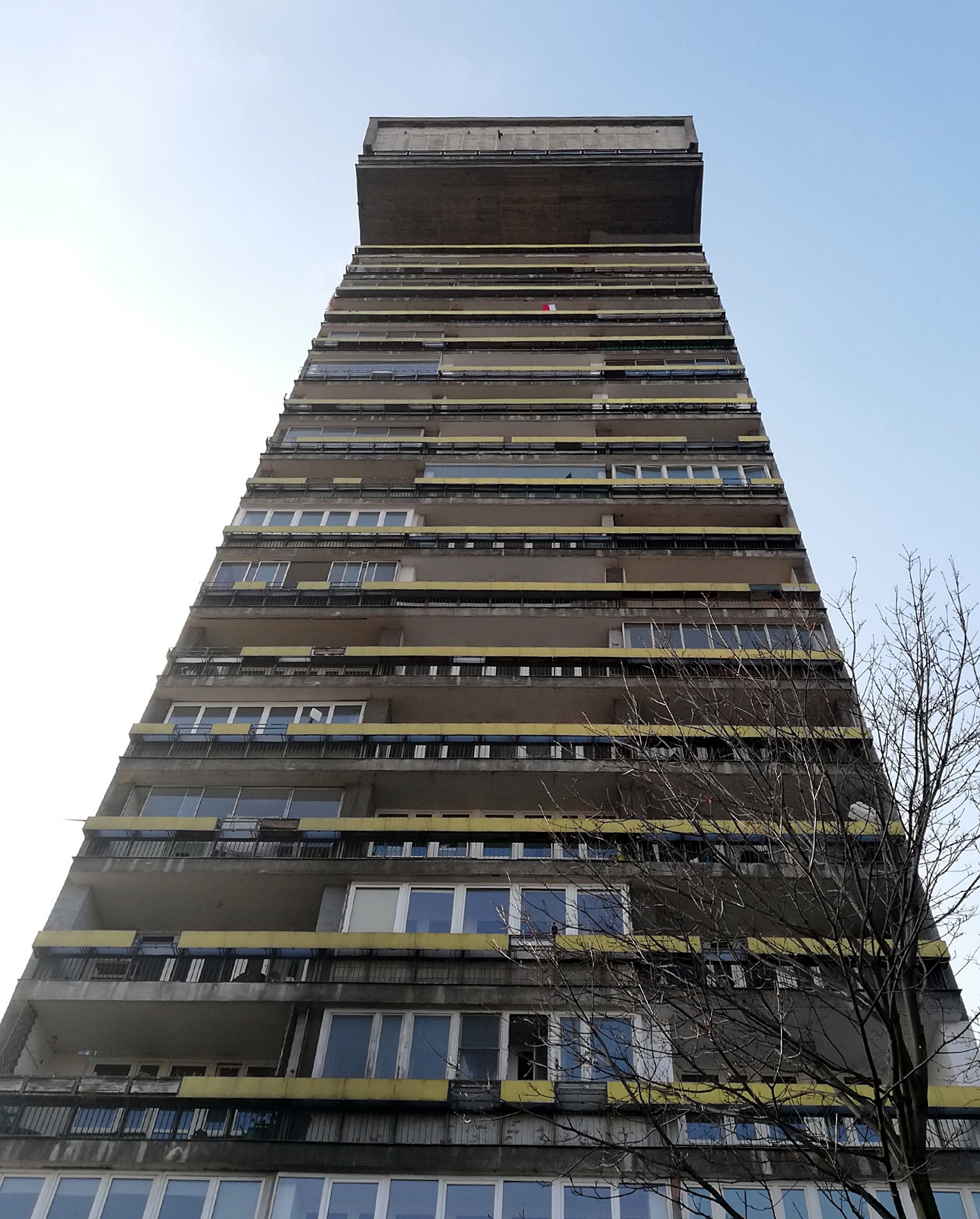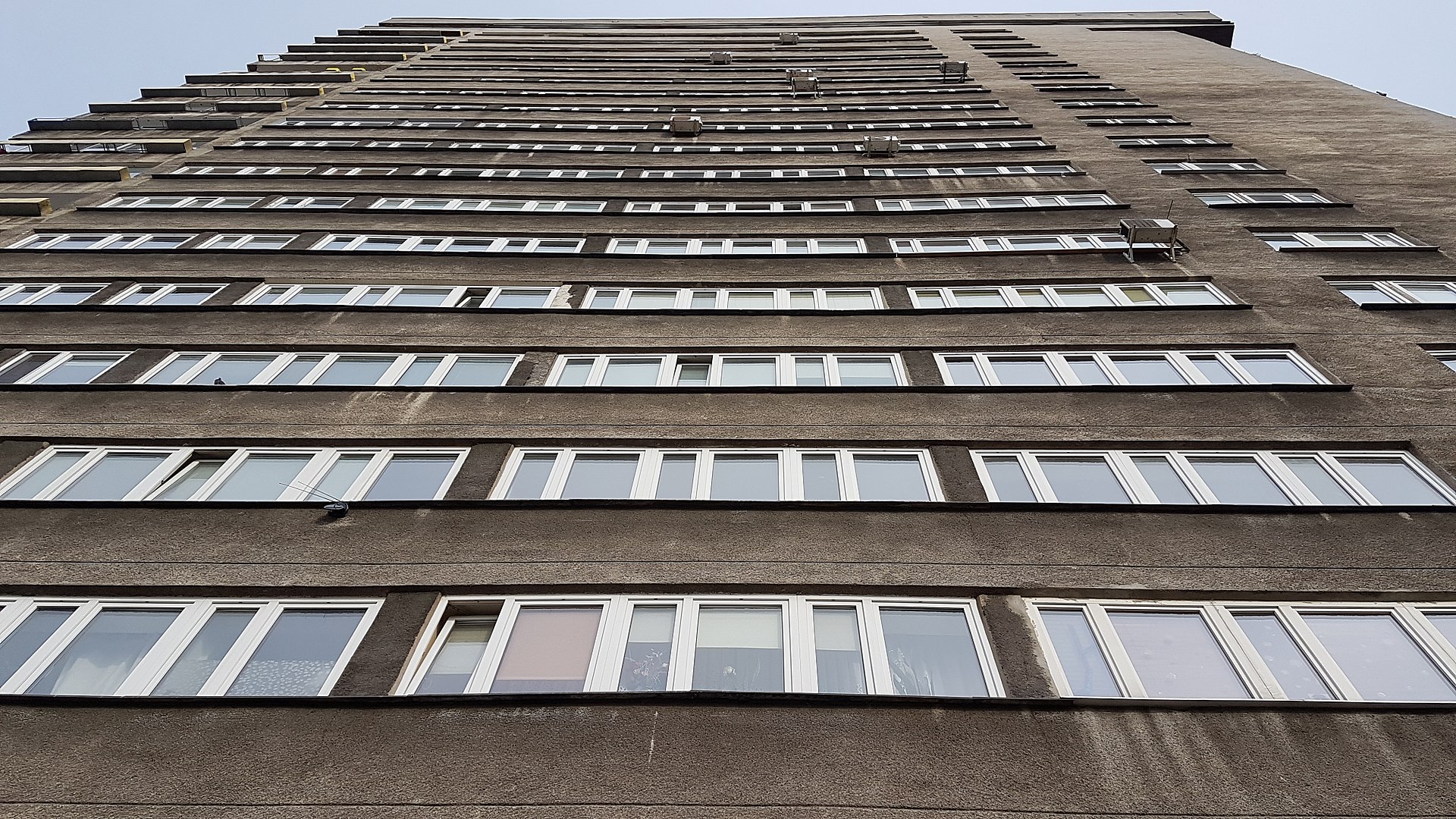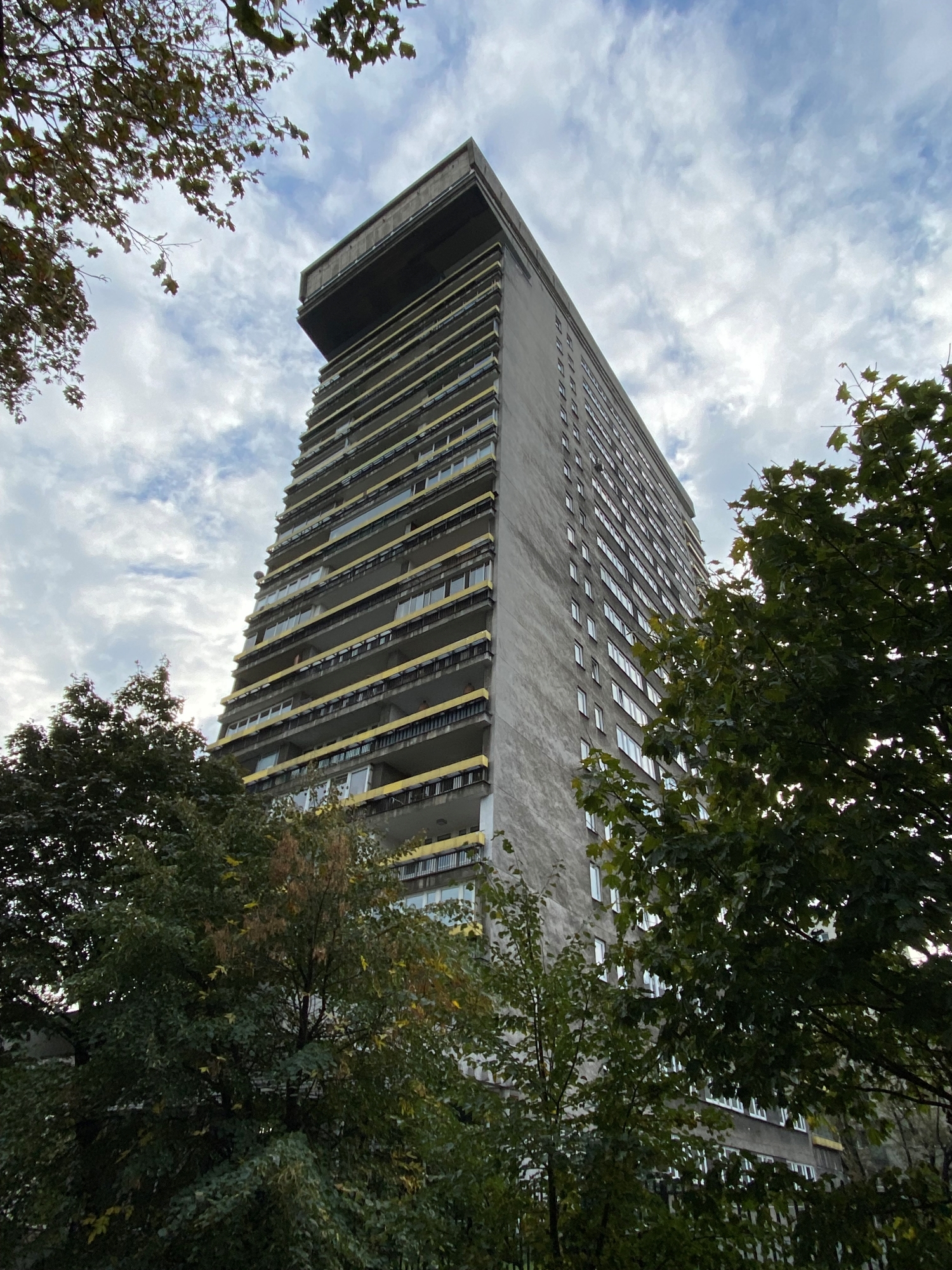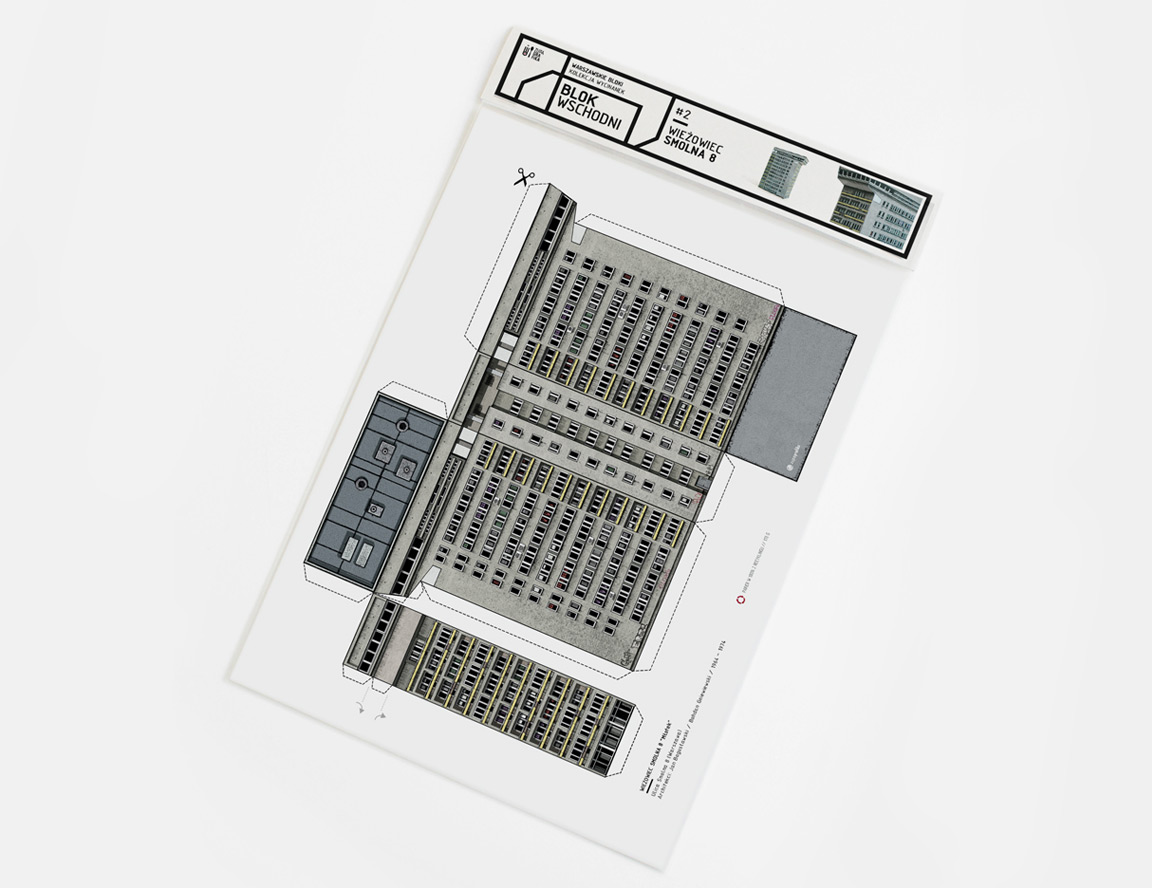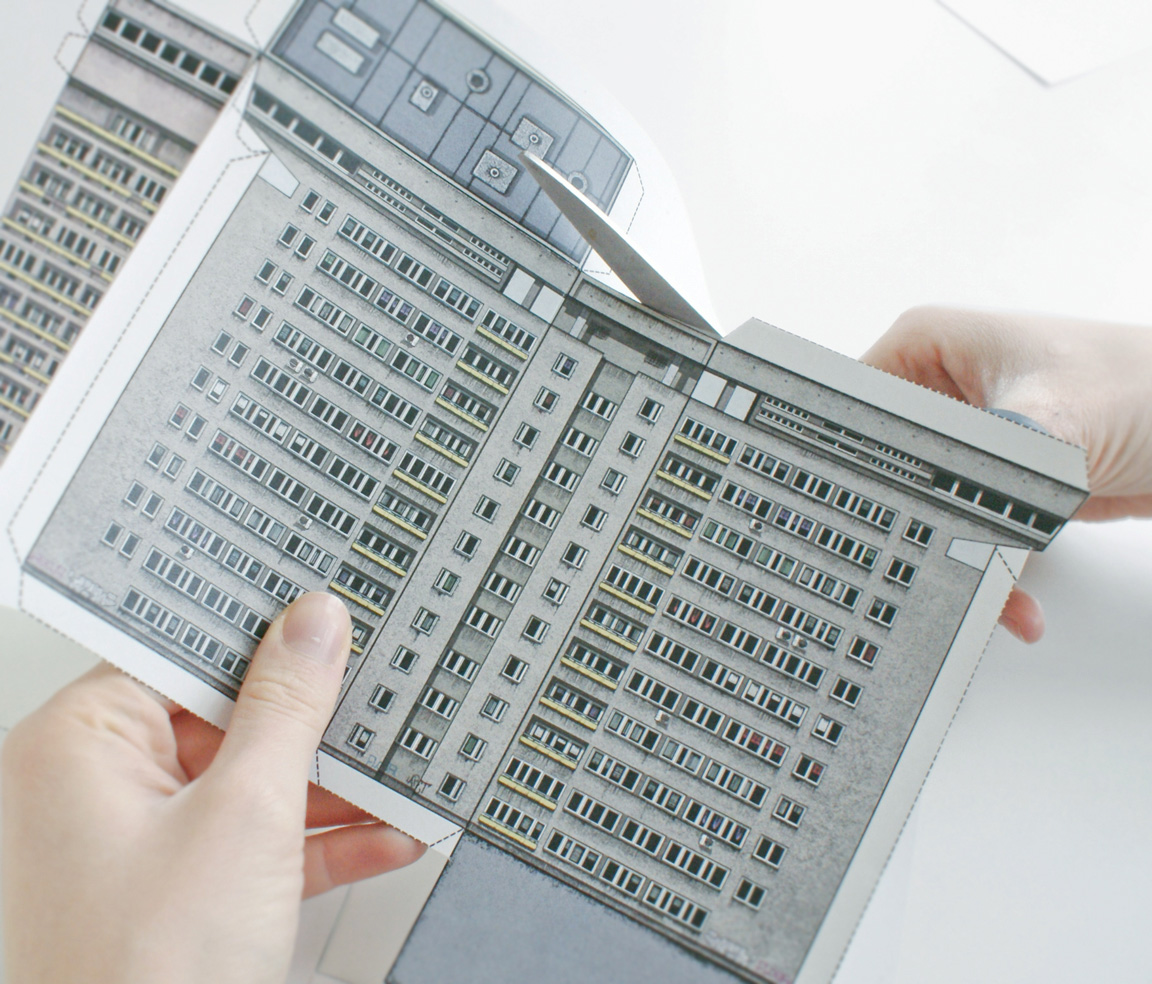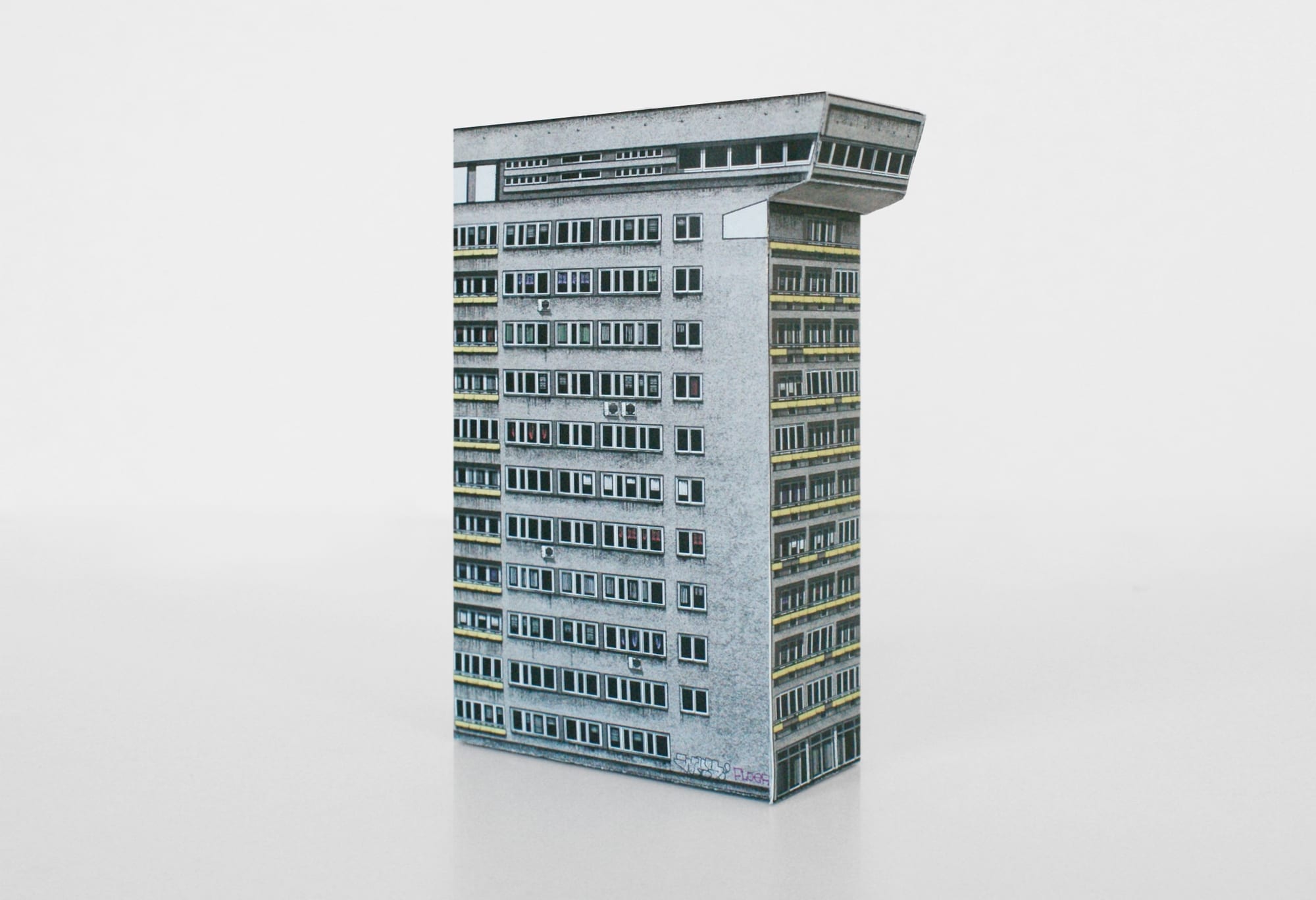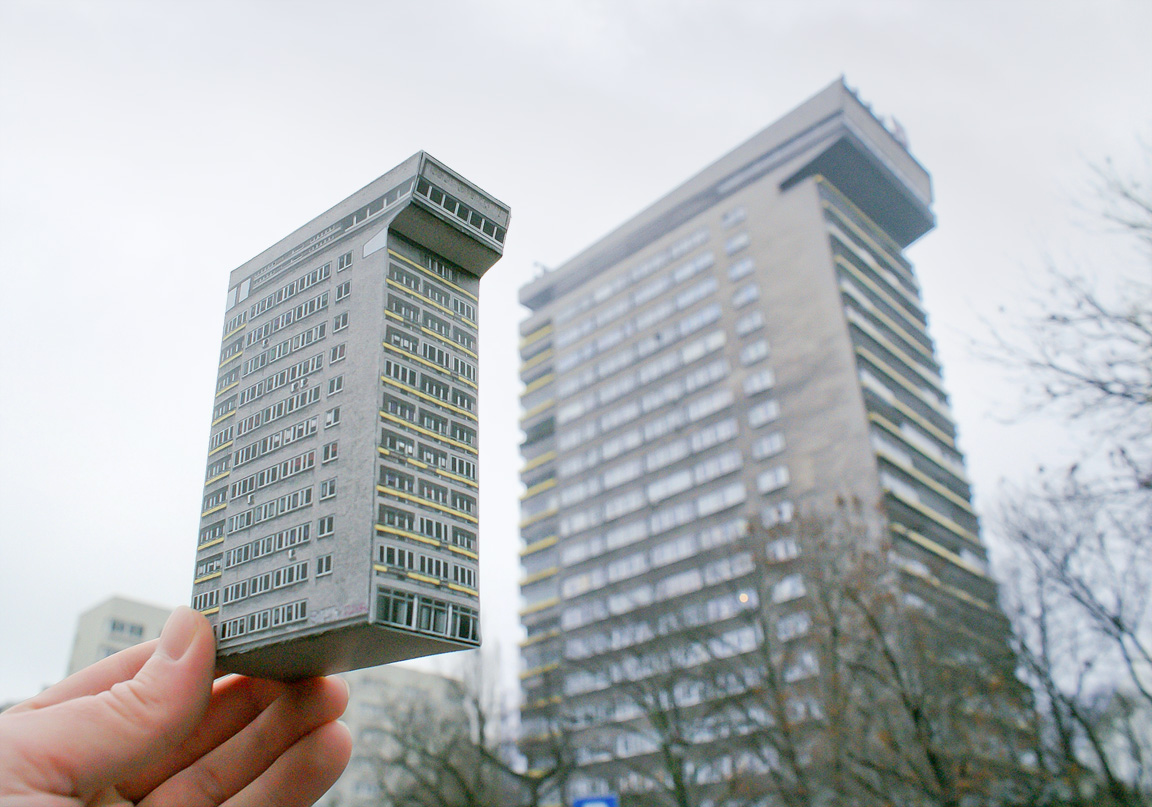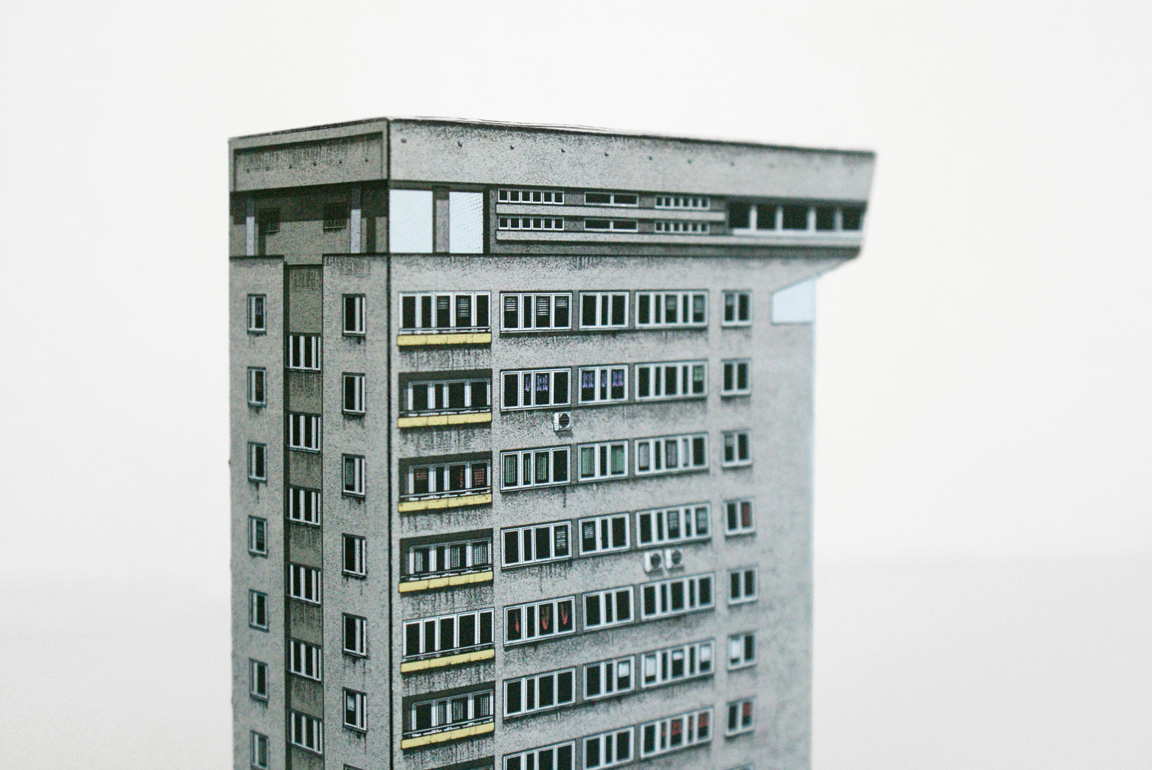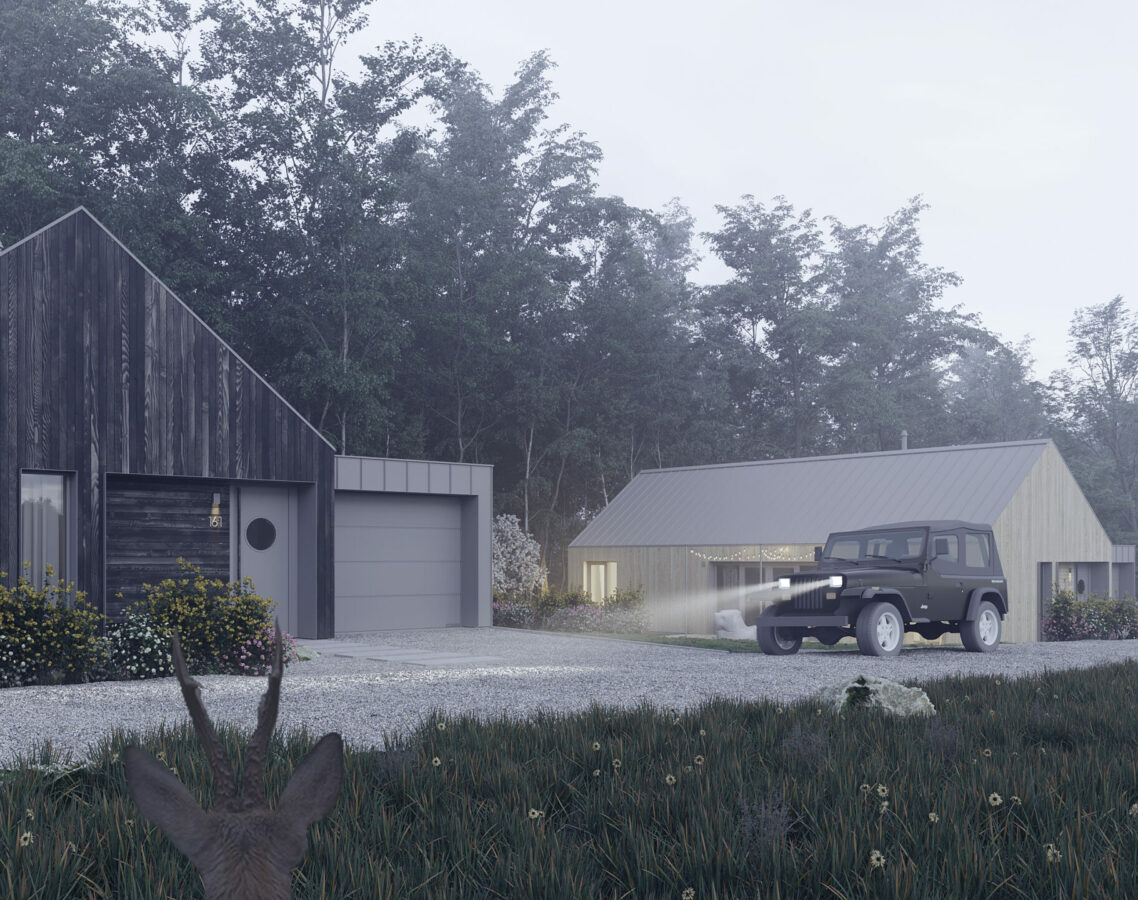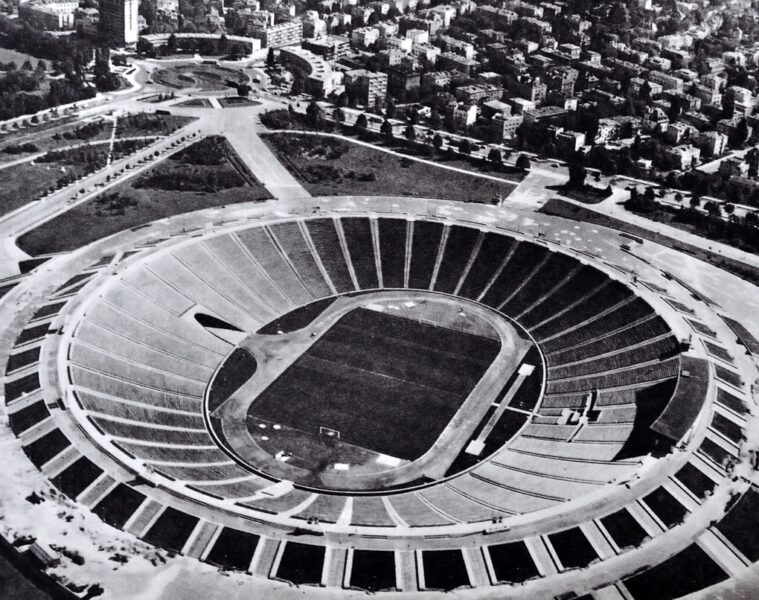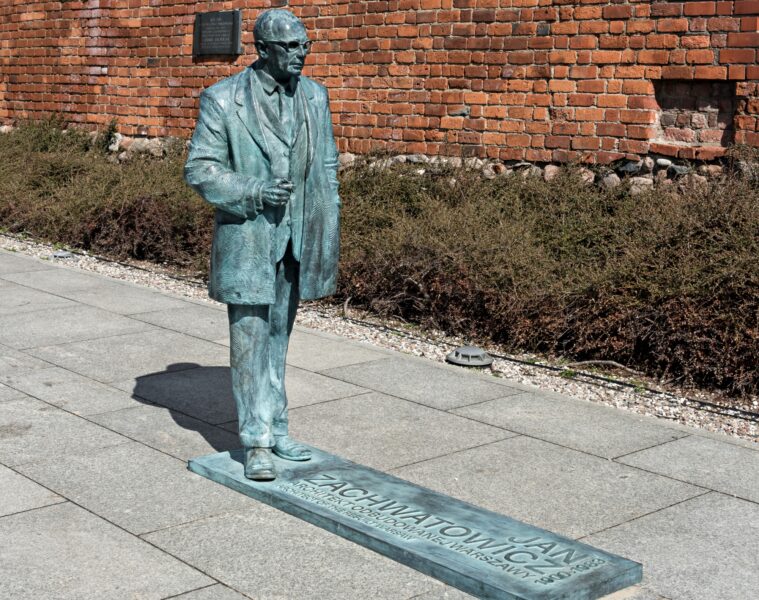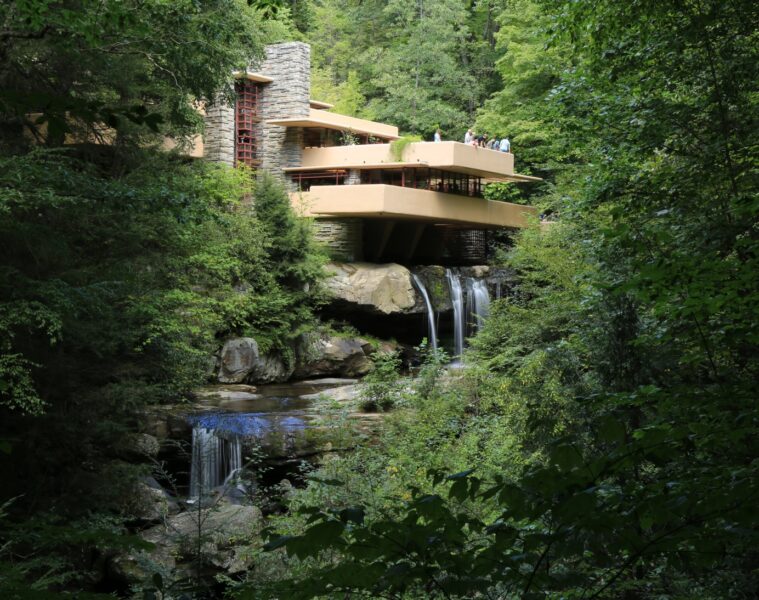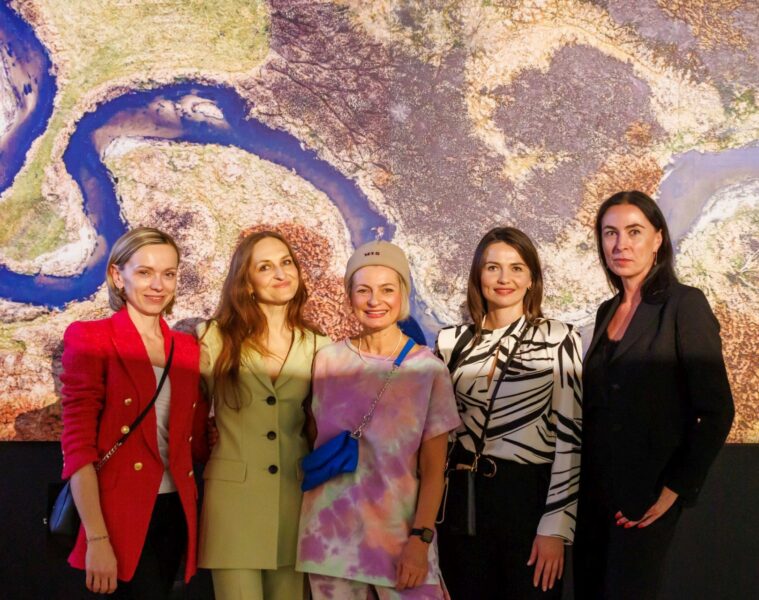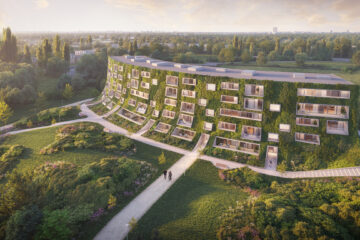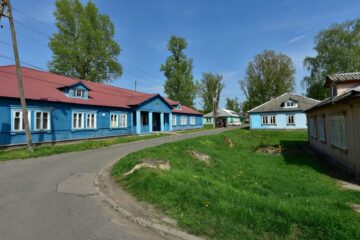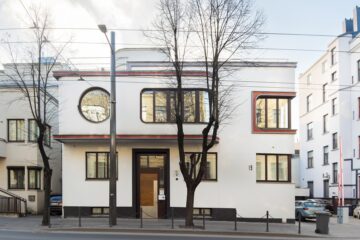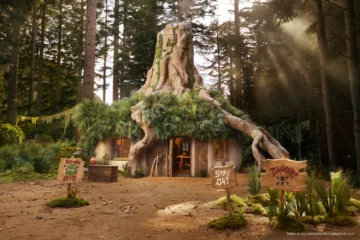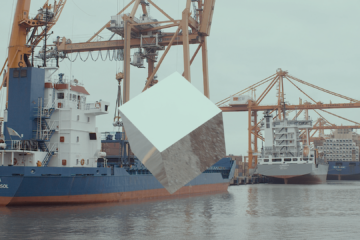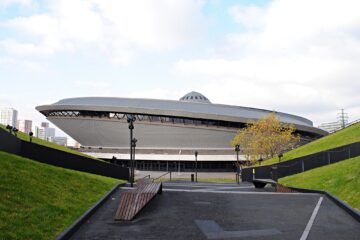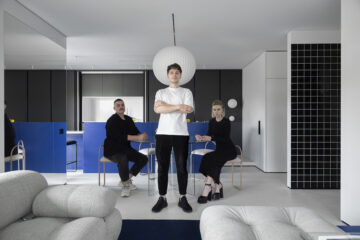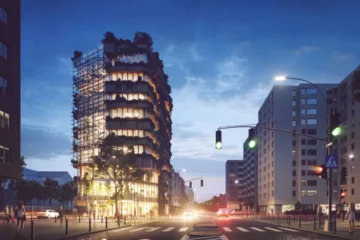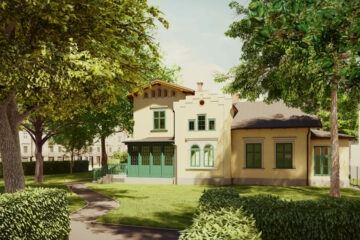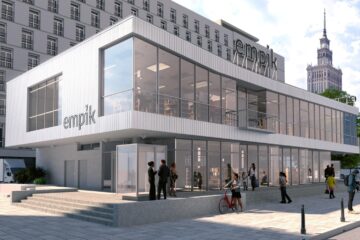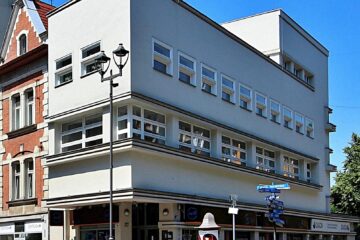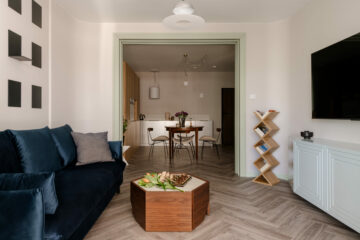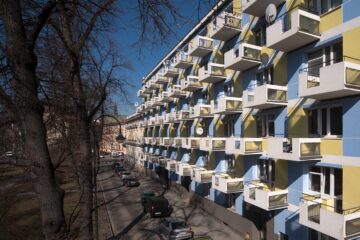With Poles with foreign currency (dollars) in mind, an exclusive apartment block was built in Warsaw in 1976. Its shape reminded some of a hammer, hence its common name. Today it is an icon of post-war modernism and one of the most characteristic buildings in the city. It has even lived to see its own model created by Zupagrafika
The building was constructed on the escarpment at 8 Smolna Street, on the site of the pre-war Ophthalmic Institute from 1870. This building survived until the Warsaw Uprising, during which it was destroyed. Its walls were demolished after 1945 and it was decided to erect a new building on the site
Figure from 1870. View of the new building of the Ophthalmic Institute. Source: Mazovian Digital Library , Public domain, via Wikimedia Commons
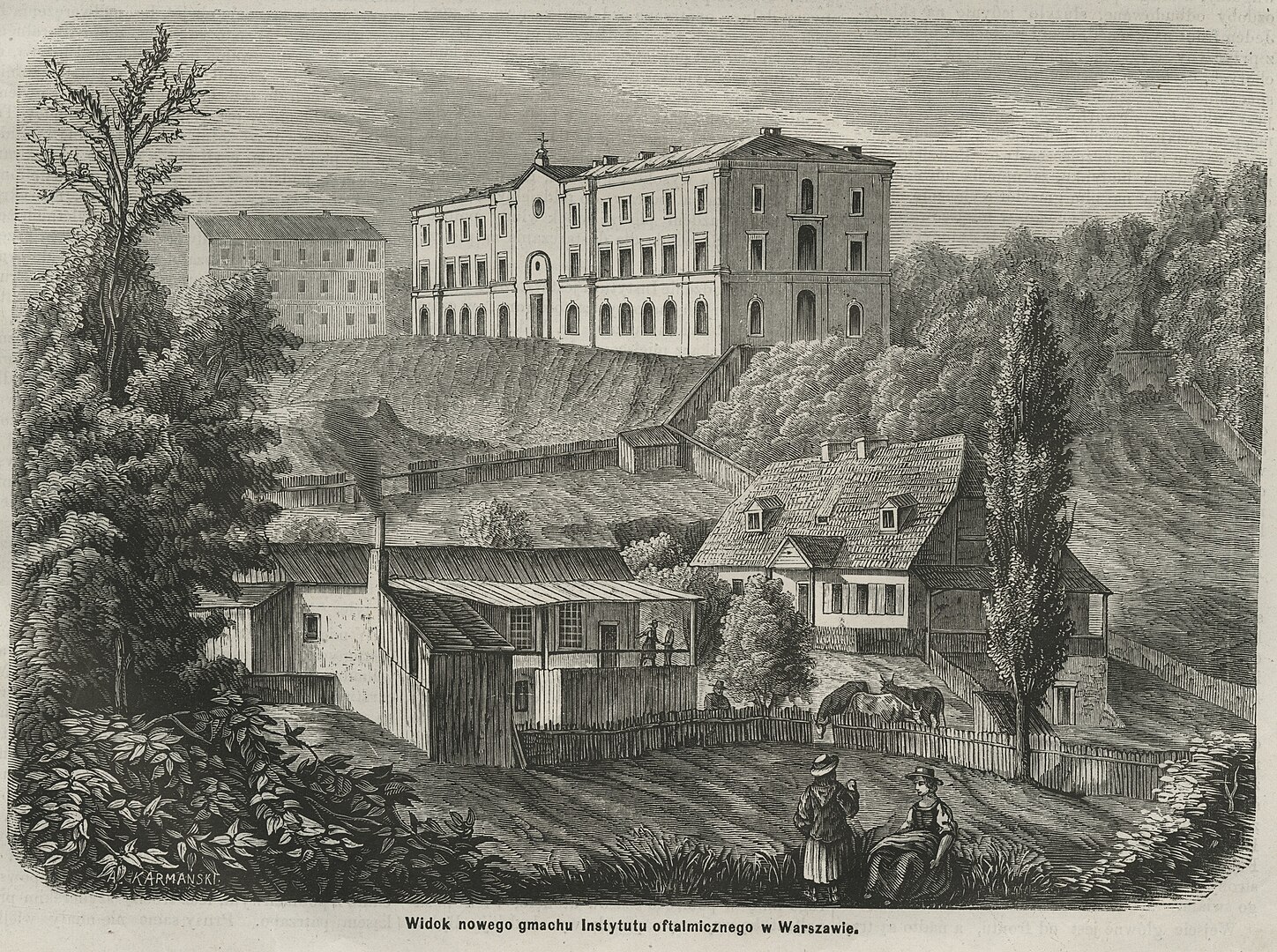
In 1964, architects Jan Boguslawski and Bohdan Gniewiewski designed a 19-storey building on the site of the pre-war institution. Its construction was completed in 1976. The investor was the foreigners’ service office “PUMA”. It was one of the first investments of its kind in Warsaw, i.e. high-rise buildings constructed since the 1960s, and quickly became one of the most characteristic buildings in the central part of the city, as well as a dominant feature of the Vistula escarpment
Warsaw Hammer in the 1970s Source: NAC – National Digital Archives
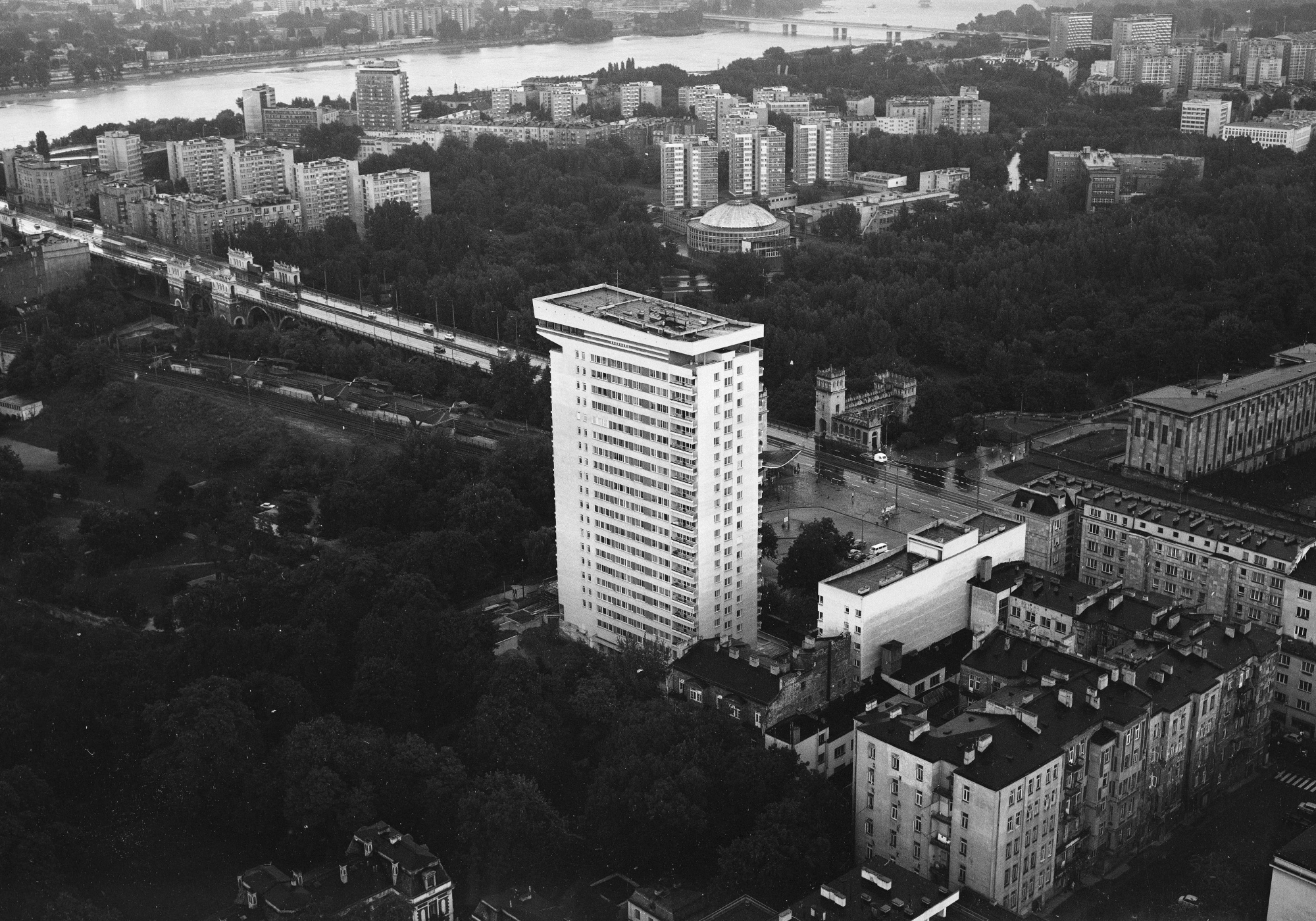
the 66-metre-high building was designed as a Polish community hotel, which was to house comfortable rooms for Poles arriving from abroad. However, it was quickly converted into a block of flats, given the high demand for housing. Premises were bought for foreign currency, i.e. dollars. In total, the building housed 140 flats ranging from 40 to 60 m2. High-speed lifts and intercoms were also installed. The building became one of the most exclusive apartment buildings in communist Poland. A two-storey entertainment venue with a terrace was located on the roof. First there was the ‘Akropol’ café and then the ‘Top Floor’ club. Nowadays, the building has lost its name as exclusive and is in need of renovation. The aesthetic mess can be seen especially on the balconies on the Powisle side. In August 2016, the building was included in the municipal register of monuments of Warsaw
In 2014, Zupagrafika published a series of illustrated cut-outs inspired by the post-war modernist architecture of Warsaw. Among them was a model of the monumental Hammer at Smolna 8
Link to the book’s website: www.zupagrafika.com/sklep/brutal-poland
Source: smartage.pl
Read also: Architecture in Poland | Office building | Monument | History | Modernism | Warsaw

